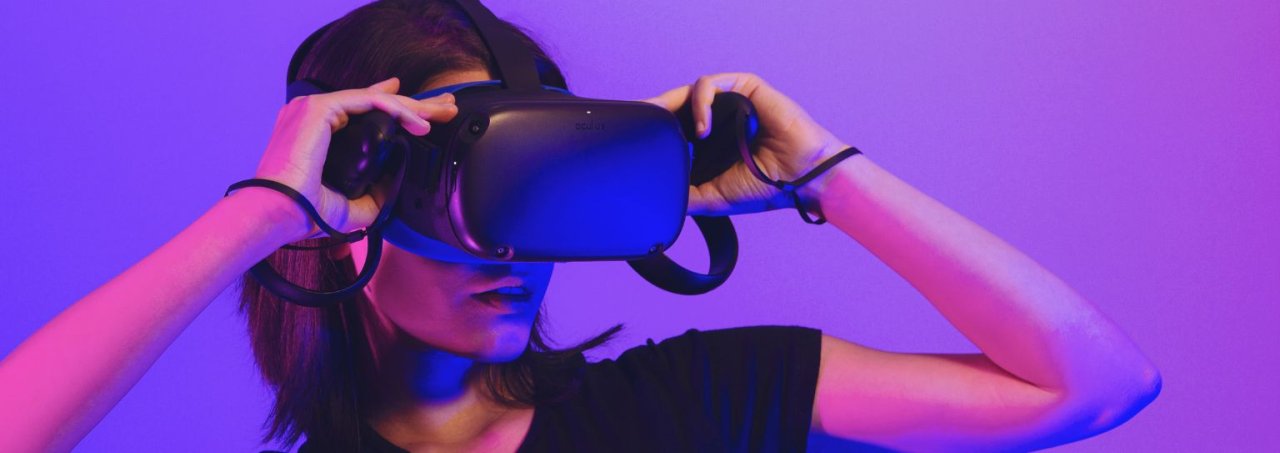
The recent launch of Apple's Vision Pro has set the tech world abuzz, promising to reshape our interaction with digital and physical environments. As augmented reality (AR), virtual reality (VR), internet of things (IoT), and other emerging technologies permeate our lives, the importance of user experience (UX) design becomes ever more pronounced and critical.
This article explores the necessary UX adaptations, considerations, and predictions as we look ahead to the future shaped by these advancements, and how UX practitioners, teams and agencies (including our team) will have to change their game.
We’ve previously written about the key role of UX being key in bridging the gap between people and technology. As technology evolves to be more powerful, connected and complex, permeating our lives in new ways, UX design becomes ever more important as a bridge, resulting in accessible, intuitive and positive experiences across new formats of digital products and experiences.
Vision Pro: a gateway to new realities
Apple's Vision Pro, launched just last week is more than just another shiny VR gadget to break the bank—it's a signpost to the future. By seamlessly merging augmented and virtual realities, it aims to redefine how we engage with digital content. As human-centred designers, content creators and more we must rethink our approaches to UX to harness the potential of these immersive experiences, that now offer many more contexts of use, behaviours, multi-modal formats and issues like safety. Now is the time to still lean into solid UX theory, reference the key textbooks, trust the tried and tested tools, but also collectively we need to begin to rewrite the new set of UX models and processes.
UX adaptations for the emergence and evolution of AR/VR
So, what does the vast emergence of AR/VR teach us about how UX needs to adapt and why?
Natural Interactions: Traditional user interfaces are primarily visual and tactile. AR and VR, however, introduce new interaction paradigms like gestures, voice commands, and eye tracking. UX designers need to create interactions that feel intuitive and reduce friction, making the transition into these new realms as smooth as possible. No mean feat. Think of it as teaching someone to dance, but in three dimensions, and without stepping on their toes.
Spatial Design: Unlike flat screens, which we’ve all been used to for decades; AR and VR operate in three-dimensional spaces. This demands a deep understanding of how digital elements coexist with the physical world. Designers must consider spatial context to ensure digital overlays are relevant and non-intrusive, providing a seamless blend of realities.
Inclusive Design: Always important, no matter the context, but as AR and VR become more widespread, designing for accessibility is crucial. Usually “cool” and accessible is hard to balance across more traditional digital design, so the challenge really becomes bigger with alternative contexts. This means accommodating users with disabilities, considering factors such as text legibility, contrast, and alternative input methods, ensuring these technologies are usable by everyone. Because nobody should be left out of the fun (or confusion) of navigating a mixed reality.
UX considerations for IoT integration
The proliferation of IoT devices creates an interconnected ecosystem, posing unique challenges for UX design, across utilities, health and professional contexts. Keeping up with the layers of automated, semi-automated and fully-controlled tools, wearables and devices can be a real challenge, especially when it comes to ensuring that the tech makes lives easier and doesn’t overwhelm with control, data complexity and cognitive load for people. Here’s what matters most:
Seamless Integration: IoT users - because of market sophistication - expect a unified experience across all their devices. UX designers must ensure consistency in interactions and data flow, creating a cohesive and uninterrupted user journey.
Privacy and Security: With more devices collecting and transmitting data, often personal in nature, concerns around privacy and security are paramount. UX designers must prioritise transparent data practices, giving users control over their information and ensuring robust security protocols are in place. Nobody likes the idea of their fridge gossiping about them behind their back.
Contextual Awareness: IoT devices operate in specific contexts, often in the background. Designers need to understand these environments and tailor experiences to meet the unique demands and opportunities presented by each context, often in real time and using predictions based on repeated usage.
Predictions for emerging tech and UX
Looking forward, to later this year and beyond, I believe several areas will become much more pivotal in shaping the UX landscape as AR, VR, IoT, and other technologies evolve.
Personalisation: Leveraging data from multiple sources, experiences will become increasingly personalised, offering tailored content and interactions that resonate with individual users' preferences and needs. Think of it as your very own digital twin
AI-Enhanced UX: Artificial Intelligence will play a significant role in enhancing user experiences. From predictive text to adaptive interfaces that learn from user behaviour, AI will help create more responsive and intuitive interactions. The personal assistant who never needs a coffee break, making our time more efficient and value driven.
Blending Realities: The boundary between physical and digital worlds will continue to blur. UX designers must develop hybrid experiences that seamlessly integrate both realms, enhancing everyday activities with digital augmentation. Can you imagine going grocery shopping with a holographic friend who knows all your dietary restrictions. Apple Vision pro and other tech is making this type of experience, reality.
Sustainability in Design: As environmental concerns grow; sustainable design practices will become essential. This includes optimising energy use in IoT devices and creating experiences that encourage eco-friendly behaviours. Because saving the planet should be just as more important as saving your progress in a video game.
The changing role of UX practitioners
As these technologies advance, the role of UX practitioners and agencies is evolving. No longer just the designers of online experiences through predictable and manageable digital device constraints, we now must navigate through the always changing labyrinth of emerging tech. Here’s my view on what’s most important:
Education and Training: User experience practitioners will need to educate themselves, colleagues, stakeholders and clients on the possibilities and limitations of AR, VR, and IoT. This might mean running workshops or creating educational content.
Holistic Strategies: It will be important to develop holistic UX strategies that encompass multiple devices and interaction methods. It's about seeing the forest, not just the trees—or, in tech terms, the ecosystem, not just the gadgets.
Rapid Prototyping and Testing: The pace of tech development means rapid prototyping and user testing will be more critical than ever. Agencies in particular will need to be nimble, ensuring the tech doesn’t continually outpace the solution.
Ethical Considerations: As mentioned privacy and safety is, and will be, even more paramount. Agencies will also have to navigate ethical considerations, ensuring that designs respect user privacy and promote well-being. It's about being the digital good guys in a world that to those immersed in AR/VR/IOT may sometimes feel like a sci-fi dystopia.
In conclusion
The advent of the Apple Vision Pro heralds a transformative era in technology. As AR, VR, IoT, and other emerging tech continue to evolve, the role of UX design becomes more critical. Designers must adapt to new interaction paradigms, consider the broader ecosystem of connected devices, manage risk and anticipate future trends to create meaningful, accessible and inclusive engaging experiences.
But... we also must remember that the timeless principles of good UX—usability, accessibility, and empathy—remain crucial and still the central pillars from which other techniques and technology hang from. By staying true to these principles while embracing the opportunities presented by new technologies, we can create a future where digital experiences are innovative, enriching, and profoundly human.


